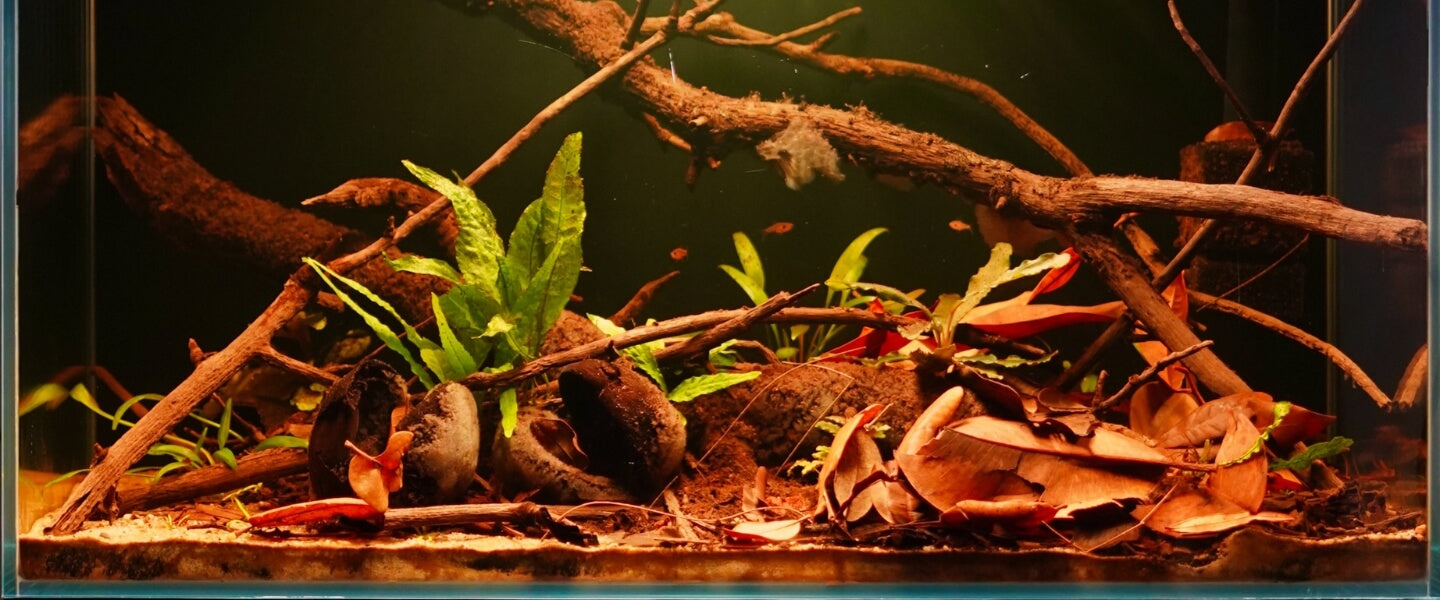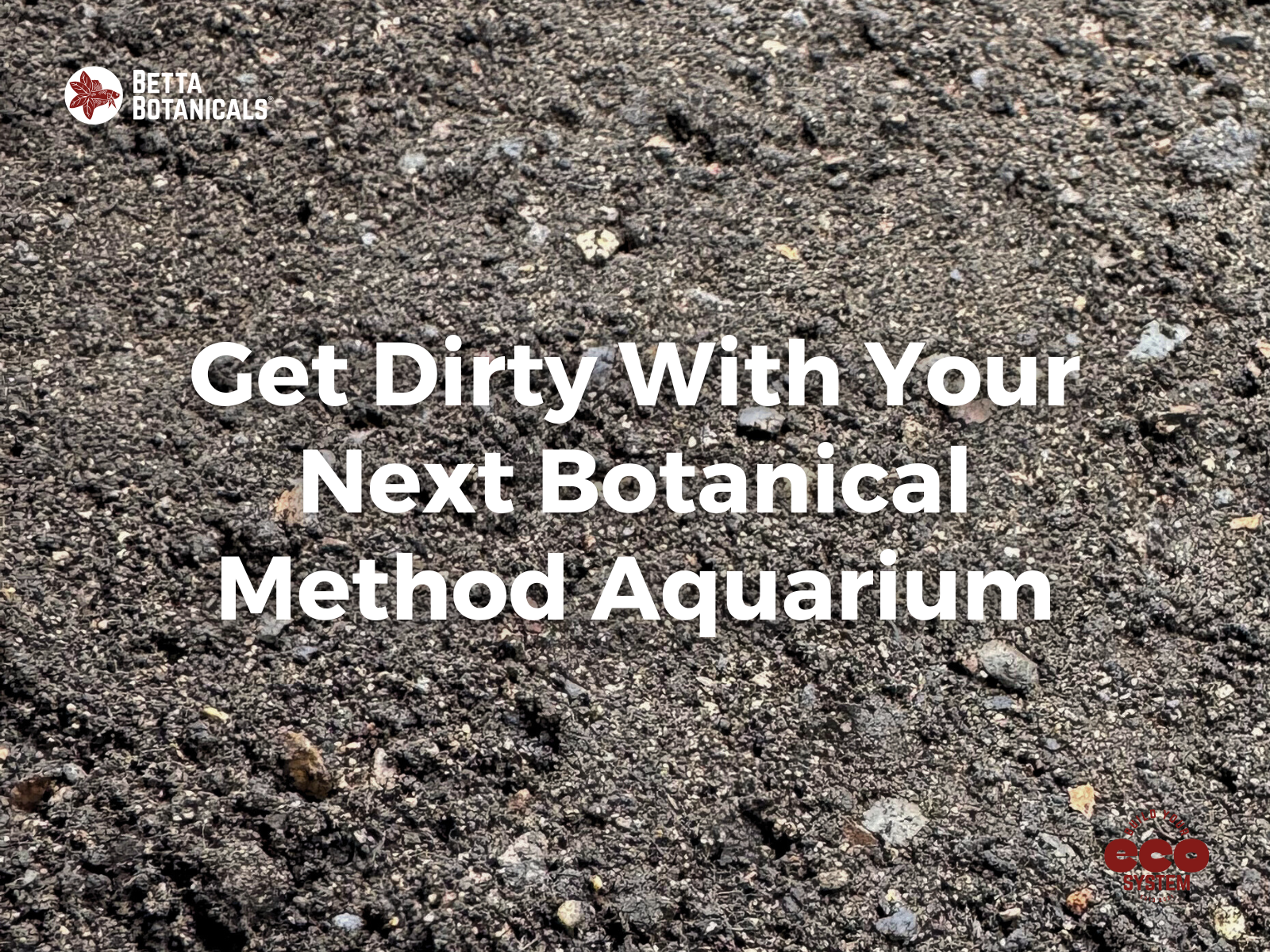How to Establish and Cycle a Betta Aquarium
Setting up a new fish tank in your home is always an exciting experience, but for first timers, there is a lot of conflicting knowledge around how to do it 'correctly'. This aquarium guide for setting up a betta fish tank is the way I have done it for the past 20 years, without fail. Other aquarium hobbyists will have other tips and tricks which you can follow, but use this aquarium guide as a backbone (or overarching theme) for the necessary steps.
Top Tips for Setting up your First Aquarium
1) Don’t rush. Mother nature waits for nobody.
2) Bacteria are your friend. They provide stability to a functioning aquarium.
3) Water changes. Every week (ish). About 20%( ish).
4) Research the fish you want, don't impulse buy...
Let’s Dive In!

An empty aquarium which will eventually house a planted botanical method aquarium for community fish.
Step #1 in Setting Up Your New Betta Aquarium
Fill up your aquarium with water on a level surface, and let sit for 24 hrs. You want to make sure that you bought a watertight glass box. This is especially important if you bought it second-hand, or had it shipped to your home. Once that is done, you can drain out the water and lay your substrate. Substrate is a personal choice, but could range from rainbow gravel, to fine sand, a sedimented substrate, to an aquasoil for a planted aquarium. Then, fill it back up with water and add water conditioner. I recommend Prime from Seachem. Keep in mind that the use of aquasoils degrades the persistence of tannins within the aquarium — the cation exchange capacity of the soils speeds up the breakdown of dark water.

In this ecosystem, a layer of coconut coir was used below the substrate to build a better environment for the plants.
Aquarium Bacteria is 'one of' the most Important Components of a Successful Aquarium.
When fish pee, poop, don't eat all the food, or die, we need bacteria to consume and break down these materials into Ammonia, Nitrites, and Nitrates. These bacteria live all around us, literally in the air we breathe, and we can help their establishment! Ask your friend who has an established aquarium for a piece of driftwood, a bit of filter media, a bit of gravel, or buy a pre‑made bacterial additive to jump-start the aquarium.
Bacterial colonization happens best in warm temps, so make sure your heater is set to 78F, and your filter is up and running. Whether you seed the tank with bacteria or not, pouring a 1/2 tsp of fish food into the tank is next! Now you wait. Grab a test kit (like from API) and buckle up for some science! Developing bacteria to process ammonia can take anywhere from 2‑6 weeks, depending on your method. If you want to speed up the process, I will have to disappoint you because there are no shortcuts. You will need to be patient. However, in my experience, the use of aquarium botanicals drastically speeds up the cycle of an aquarium because they increase the surface area inside of the tank and the botanicals themselves contain compounds that feed the bacteria and fungi.
I like to use API water test vials for measuring ammonia, Nitrites, and Nitrates.
Water Testing is Key in Your New Betta Aquarium
Every other day after adding that fish food, you should test for Ammonia. I use a test kit from API. Once you’ve got Ammonia, begin testing for Nitrites, and subsequently for Nitrates. Once your Ammonia reading does not change color per test kit specifications, and the nitrite reading does not change (this means they are effectively zero), we are ready for the next step. Adding LIFE! One tip that I would like to add is that if you've started your aquarium with lots of aquatic plants, you may never see an Ammonia, Nitrite, or Nitrate reading as the plants will preferentially uptake Ammonia as they grow. In this case, you won't see any readings on your test kit, and in my experience, I like to wait two full weeks before adding life to the aquarium — just to be on the safe side.
Go Slow, Let Nature Find Its Way
The first forms of life should only be added to your aquarium after you have;
1) ~Zero Ammonia and Zero Nitrites
2) Did your first 20% water exchange
3) Written down on your calendar a day of the week you plan to consistently do a 20% water exchange.
I love Wednesdays because #waterchangewednesday is a fun event on Instagram to join. Make sure your aquarium heater has warmed the water by reading your tank thermometer, and that your filter is running. The first forms of life you add should be something simple and hardy.
Examples: ramshorn snails, mystery snails, pond snails, rasboras, tetras, platys, barbs, or a BETTA! Proper research on stocking combinations is recommended. I like using Seriously Fishy for natural habitat inspiration.
This 22 gallon bookshelf aquarium is finally ready for new life to be added.
Will your Betta Aquarium be a Focal Point of your Home?
I want you to have an eye-catching aquarium in your space. To ensure everything stays on track, I recommend you get into the habit of weekly water changes of ~20%, feeding only what your fish eats in 60 seconds, and being patient. Adding new tank inhabitants slowly is important, but make sure that the tank they come out of at your Local Fish Store does not contain any sick fish. The bacteria you cultivated in the beginning will grow with the livestock you add, but not overnight. Aquariums function on the scale of weeks and months, and you will learn over time how your tank evolves. This same principle applies if you want to add botanicals to the aquarium — you can't add an entire bag of Texas Live Oak to a 5-gallon. Run your lights for 6-8 hrs when you’re home, and maybe longer if you have plants (put the light on a smart plug too!). Don't fall into the trap of the replacement carbon filter pads. It's a waste of your money. Purchase a course filter sponge and cut it to the dimensions of your filter. Once per month, squeeze it out into your water change bucket to ensure it doesn't get too clogged.
Do Your Research before Getting a Betta Aquarium
Remember, don’t forget your water conditioner. This removes toxic chemicals in your tap water. Additionally, an aquarium is an ecosystem. Just because it doesn’t have live plants (yet!) or aquarium botanicals, doesn’t mean it’s any less of an ecosystem. You are in control of its health, and there are so many tools at your fingertips to help you. Go slow, purposely decide what fish you want before you get to the pet store, and spend some time looking at other tanks to see what you like and don’t like. Send an email to info@bettabotanicals.com if you have any questions, and if you made it this far in this guide, you’re well on your way to having a successful tank. If you found this guide interesting, I invite you to discover the methods behind my personal favorite way to keep an aquarium, The Botanical Method Aquarium.










Inspire your friends:
Blackwater vs. Botanical Method Aquariums: Key Differences & Similarities
Should You Remove Old Rotting Aquarium Leaves? NOPE!